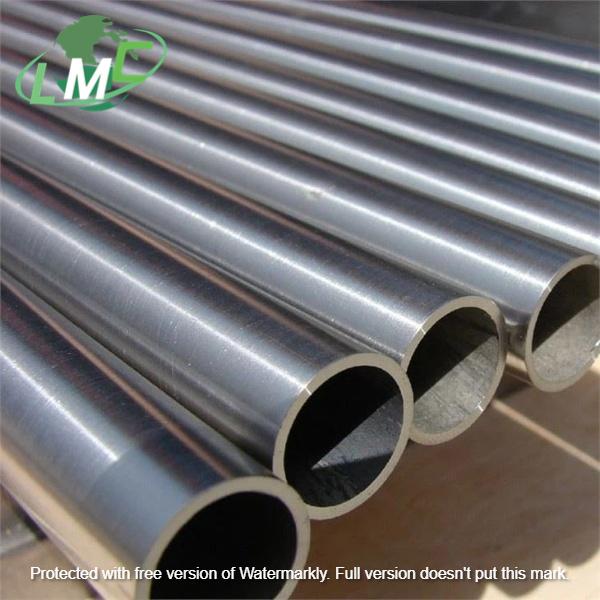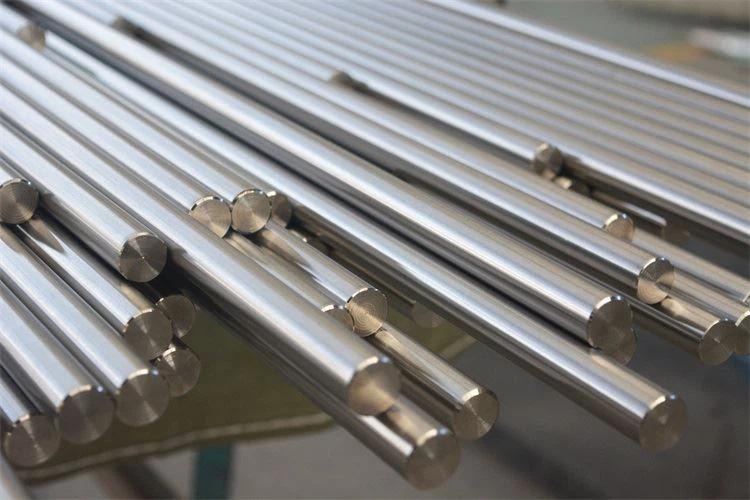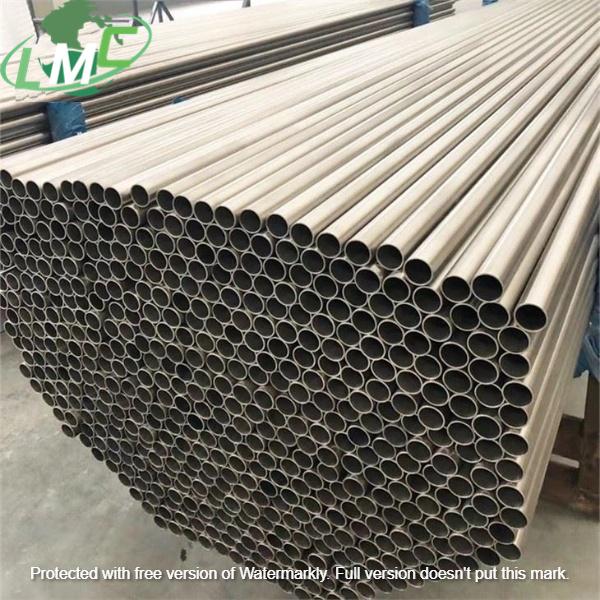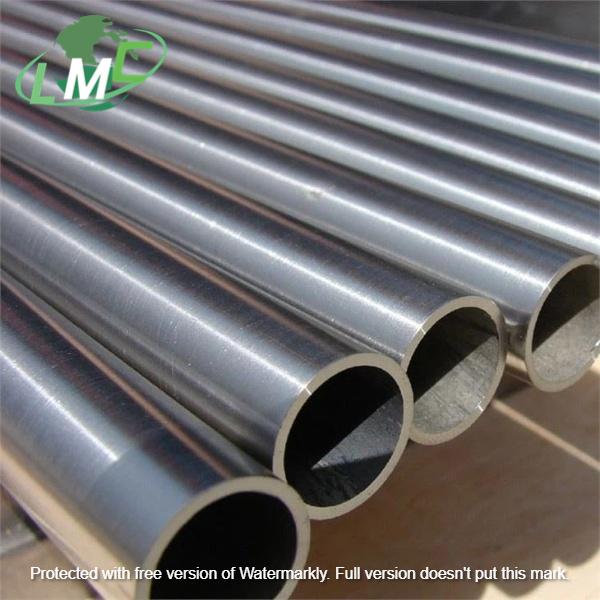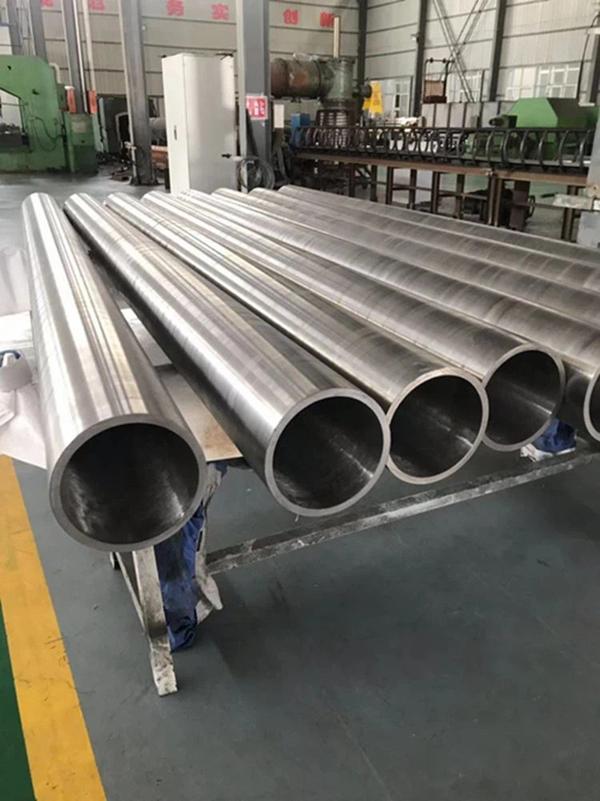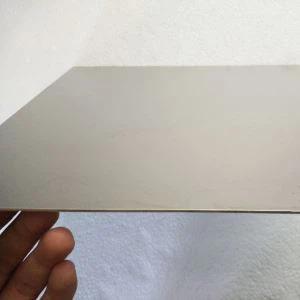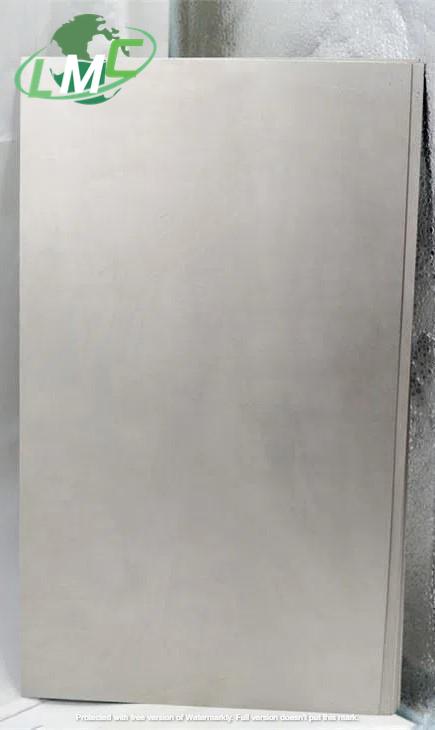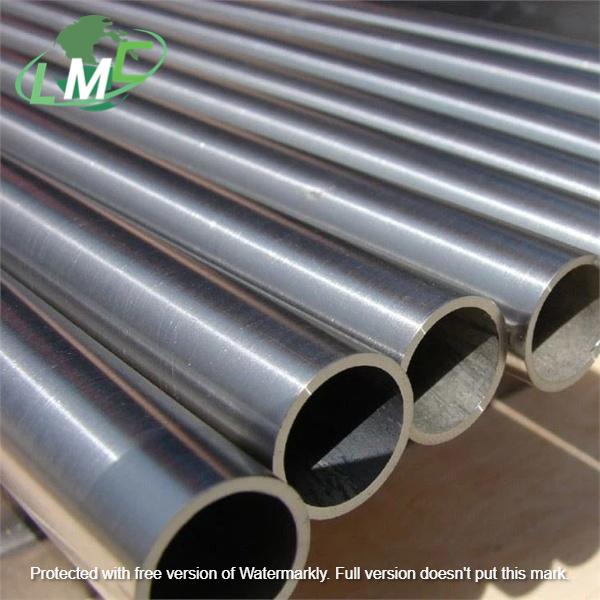Titanium Alloy Tubes
Product name: Titanium alloy Tubes
Standard:ASTM B338 ASTM B861 ASTM B862
Material:Titanium Gr7
Diameter:5-914mm
Wall thickness:0.5-50mm
Length:Max 16000mm
Surface:Pickling surface/Polished
Type:Seamless, welded
Application:Heat Exchanger, chemical industry etc.
Technique:Rolled
Because stainless steel and other materials are inefficient in many cases, titanium tubes are increasingly used in various occasions. A common titanium grinding product is titanium tube. Because of its superior corrosion resistance and strength weight ratio, titanium tube is used in various products. The development of many different alloys has expanded the application of titanium in industry, chemical processing and power generation.
Commodity
Titanium Alloy Tube /Pipe/Tubing,titanium alloy seamless tube/pipe,titanium alloy welded tube pipe,ASTM B338 titanium tube,Titanium pipe price per kg
Tube Shape
Round Square Flat Coil
Material
Gr1,Gr2,Gr3,Gr4,Gr5(Ti-6Al-4V),Gr7,Gr9,Gr11,Gr12,Gr23(Ti-6Al-4V Eli)
Standard
ASTM B337 ASTM B338 ASTM B861 ASTM B862
Type
Seamless
Welded
ERW
Fabricated
OD
5-914mm or as customized
Wall Thickness
0.5-50mm or as customized
Length
Max 16000mm
End
Plain End, Beveled End, Threaded
Certificate
EN 10204/3.1B, Raw Materials Certificate 100% Radiography Test Report Third Party Inspection Report, etc
Application
Off-Shore Oil Drilling Companies
Power Generation
Petrochemicals
Gas Processing
Specialty Chemicals
Pharmaceuticals
Pharmaceutical Equipment
Chemical Equipment
Sea Water Equipment
Heat Exchangers
Condensers
Pulp and Paper Industry
Titanium alloy tubes can be divided into three categories according to phase composition: α Alloy( α+β) Alloy and β alloy
1. α Stability of alloy containing a certain amount α The element of phase, in equilibrium, is mainly composed of α Phase composition. α The alloy has small specific gravity, good thermal strength, good weldability and excellent corrosion resistance. Its disadvantage is low strength at room temperature. It is usually used as heat-resistant and corrosion-resistant materials. α Alloys can usually be divided into complete alloys α Alloy (Gr7), near α Alloy (ti-8al-1mo-1v) and alloy with a small amount of compounds α Alloy (Ti-2.5Cu).
2. ( α+β) Stability of alloy containing a certain amount α Phase harmony β Phase elements, and the microstructure of the alloy in equilibrium is α Phase harmony β Phase. ( α+β) The alloy has medium strength and can be strengthened by heat treatment, but its weldability is poor. ( α+ β) Alloys are widely used, and the output of Ti-6Al-4V Alloy accounts for more than half of all titanium materials.
3. β The alloy contains a large amount of stable β Phase elements can be used at high temperature β All phases were retained to room temperature. β Alloys can usually be divided into heat treatable alloys β Alloy (metastable) β Alloy and near metastable β Alloy) and thermal stability β Alloy. Heat treatable β The alloy has excellent plasticity in quenched state, and the tensile strength can reach 130 ~ 140kgf / mm2 by aging treatment. β Alloys are usually used as high strength and high toughness materials. The disadvantages are large ratio, high cost, poor welding performance and difficult machining.
Send Message

